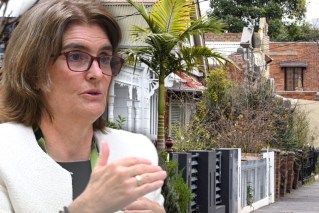AMA slams health insurance companies for ripping off consumers


The AMA has taken aim at insurance policies raking in huge profits but offering less rebates. Photo: Getty
Australia’s peak medical body has called out insurance companies for claiming record profits while patients miss out on private health rebates.
The Australian Medical Association (AMA) released its annual Private Insurance Report Card on Friday, which revealed private health insurers earned $1.3 billion more than two years ago while returning less rebates and money to customers.
Steve Robson, AMA president, said consumers should carefully consider which health insurance option is best for them and focus on products that deliver treatment they may need in the future.
“Our report card highlights the importance for consumers to look closely at their options, as the benefits can vary dramatically between insurers for the same product,” he said.
“For the uncomplicated delivery of a baby, we uncovered a dramatic 30 per cent variation of rebates between the highest and lowest paying insurers.”
In 2022-23, the amount of money returned to customers from hospital insurance policies fell by 81.6 per cent in 2022-23.
Declining value
Robson said the value consumers are receiving from their private health insurance is declining, while insurers are making big profits.
“As our private hospital system covers 40 per cent of Australia’s hospitalisations and performs two out of three elective surgeries, it is crucial the private health insurance sector thrives,” he said.
“Especially as more and more pressure is heaped on our public hospitals.”
Before COVID-19 the number of people with hospital treatment coverage was steadily dropping, according to the report card, but since 2020 the percentage has increased from around 44 per cent to 46 per cent.
The report has also found that more policies are consistently excluding certain treatments, as the number of non-exclusionary policies falls.

Insurance policies are including more and more exclusions, according to the report card. Photo: Getty
Robson said while private health coverage has increased since the COVID-19 pandemic, so has the complexity of Australia’s health challenges because of an ageing population and higher prevalence of chronic health conditions.
“There should be a mandated responsibility for all private health insurers to return a minimum amount of money that they receive back to their customers in the form of rebates and benefits,” he said.
Chronic conditions on the rise
Another health organisation, the Public Health Association of Australia, has also issued an urgent call to action to address the growing number of people living with chronic diseases.
Professor Terry Slevin, PHAA CEO, said it is a crisis that cannot be ignored.
“We cannot lose sight of the importance of daily physical activity and a whole-foods diet, which protect us from chronic disease,” he said.
“We can make inroads into worrying physical activity trends through government action which supports healthy living, such as investments in active travel, and making it easier for people to incorporate physical activity into their day.”
Data from the Australian Bureau of Statistics, published on Friday, revealed half of all Australian adults have a chronic health condition, and Slevin said the government must focus on preventing non-communicable diseases.
“To arrest this trend, the Australian Government must ensure that the forthcoming Australian Centre for Disease Control (ACDC) prioritises the prevention of non-communicable diseases, and not just infectious diseases,” he said.
“To do so would be consistent with the election commitment on the ACDC.”
In good news, the data revealed that smoking continued to fall within the Australian population, halving over the last two decades.
“Of course, 10 per cent is still too high, and the recent legislation passed last week will, we believe, drive further welcome reductions in smoking,” Slevin said.
“However, the survey revealed that one in seven adults reported current use of e-cigarette and vaping devices.”








